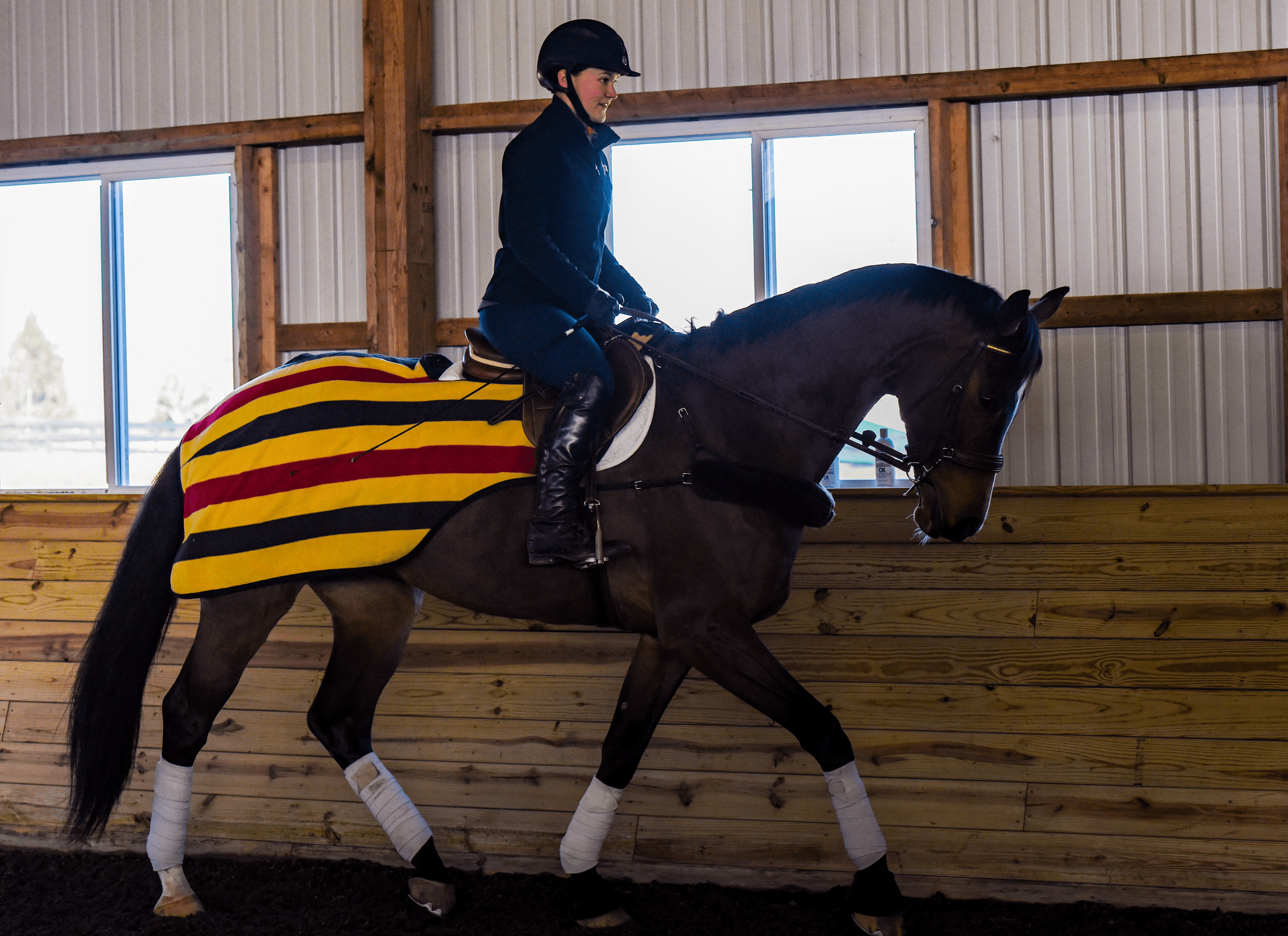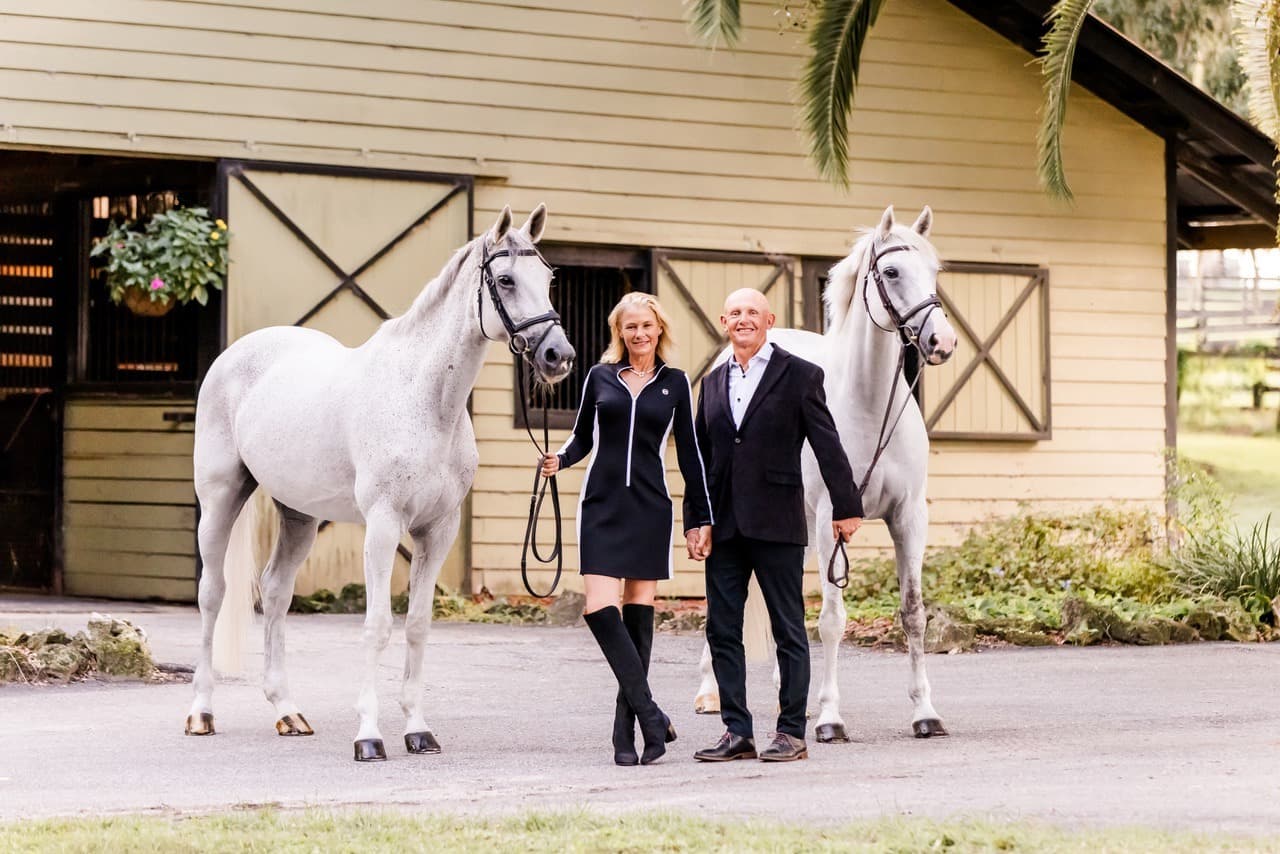Conquer the Cold with these Three Winter Weather Riding Exercises

Riding in the winter can be a bit of a perilous effort — cold temperatures, lack of turnout time, and confinement to smaller spaces all make for difficulties to navigate during this long, dark season. Luckily, USEA Instructors’ Certification Program (ICP) Level III Certified Instructor Jennifer Rousseau has a handful of tactful tricks to keep both you and your partner engaged all winter long.
1) Do not underestimate the benefit of hacking out!
Rousseau pointed out that hacking out can prove incredibly beneficial for both your horse’s health and soundness of mind prior to the season of being stuck inside. A horse in average to good physical condition will retain his/her body condition for 30 days without any work whatsoever, but a rider can prolong their downtime by hacking. Even if mostly walking, try to use hills and transitions to prevent the horse from losing all muscle tone.
When the weather feels too chilly or the ground appears too hard for more intense work, Rousseau suggests taking advantage of your time out hacking to improve on your dressage movements! One of the best places to teach an experienced horse (Training level and above) new things and to keep his level of motivation high, is to find ways to incorporate some of the movements from the dressage test into the ride home. Once you turn for home on the trail, most horses’ natural impulsion improves dramatically, making for easier conversations about going forward and laterally.
2) Focus on Accuracy
Once confined to the arena, Rousseau points out that your main focus should be on developing accuracy in both flatwork and jumping, and strengthening your horse through transitions and gymnastics.
According to Rousseau, markers and elements placed on the arena walls or ceiling can additionally be used to encourage accuracy. Incorporate letters and markers into flatwork and jumping exercises as much as possible. This will make riders accountable for their degree of accuracy in a matter of centimeters, not just meters. Make sure your indoor has a set of dressage letters and position them as accurately as you can. In the absence of letters, you can put up other incidentals in the ring such as a row of small triangle flags along the ceiling of the centerline or a hanging flag from the ceiling at X. Rousseau recommends placing additional banners or flat wall decoration at each end of the arena on the quarter line and rotating their position to provide additional accuracy markers as well as desensitize horses to banners that could appear along the show ring fence.
Get creative with your gymnastic jumping exercises! Keep the jumps small and the lines, angles, turns and transitions frequent. Intersperse ground poles, raised cavalletti and small jumps, bounces, offsets, and skinnies to create unique and detailed gymnastic courses. Rousseau adds that it is worth it to invest in a couple of key portables to spruce up your winter program.
Use all manner of upwards and downwards transitions, and work towards perfecting your half-halt to strengthen the pushing and carrying power of your horse during the winter months. By implementing “mini-transitions” within the gait (such as asking the horse to push forward for a step or two in whatever gait they are in) you can emphasize developing the horse’s immediate response. Once you have the horse responding instantly to the forward aid, you can use this mini-transition randomly at various moments in your workout when you think our horse least expects it, so that you keep him not only listening to the aids but also listening for the aids. This is one way to help protect your horse against the “arena blahs” where a horse gets discouraged with having nowhere to go.
3) Take Tight Spaces as an Opportunity to Work on Rideability
While being confined to an indoor arena may not seem near as inviting, it can actually be a positive thing in terms of working on posture and on rideability:
One thing Rousseau suggests is to paint a wide stripe around the arena wall approximately halfway between the top of the kick board and the ceiling. At this height, when the rider looks at the stripe, he/she should be looking “up” or “forward” with correct posture and balance. This is an excellent way to reverse the commonly-known “study the ground” syndrome.
Rousseau also added that the pressure created by the arena wall can actually improve the rideability of the horse by understanding how to best use it. This exercise can be modified to fit the experience level of the horse and rider being challenged therefore asking less of greener horses and riders and more of those with experience. Start by jumping across the diagonal or in to the short end of the arena. As the horse approaches the wall, ask the rider to hold the straight line, before turning or allowing the horse to fade into the new direction, as close to the wall as balance permits. This will educate the rider on feeling the role of using both reins and both legs to create the line and, then more so, the importance of the inside leg and outside rein in holding the line. This exercise will begin to give the rider a feel of when they truly need to turn to preserve the rhythm and balance of their horse so they begin to understand when they have balance or lose it and what the contributing factors are.
Rousseau’s last winter tip? On that rare occasion that the sun shines, bundle up and get outdoors! Be careful to contain yourself to areas with good footing such as snowy fields and bare roads but getting out will definitely improve both you and your horse’s attitudes.














